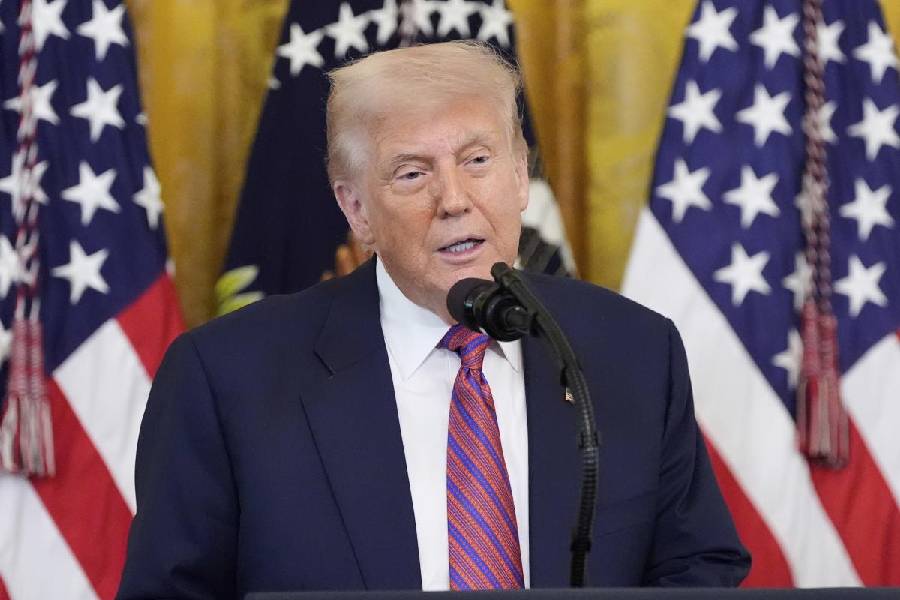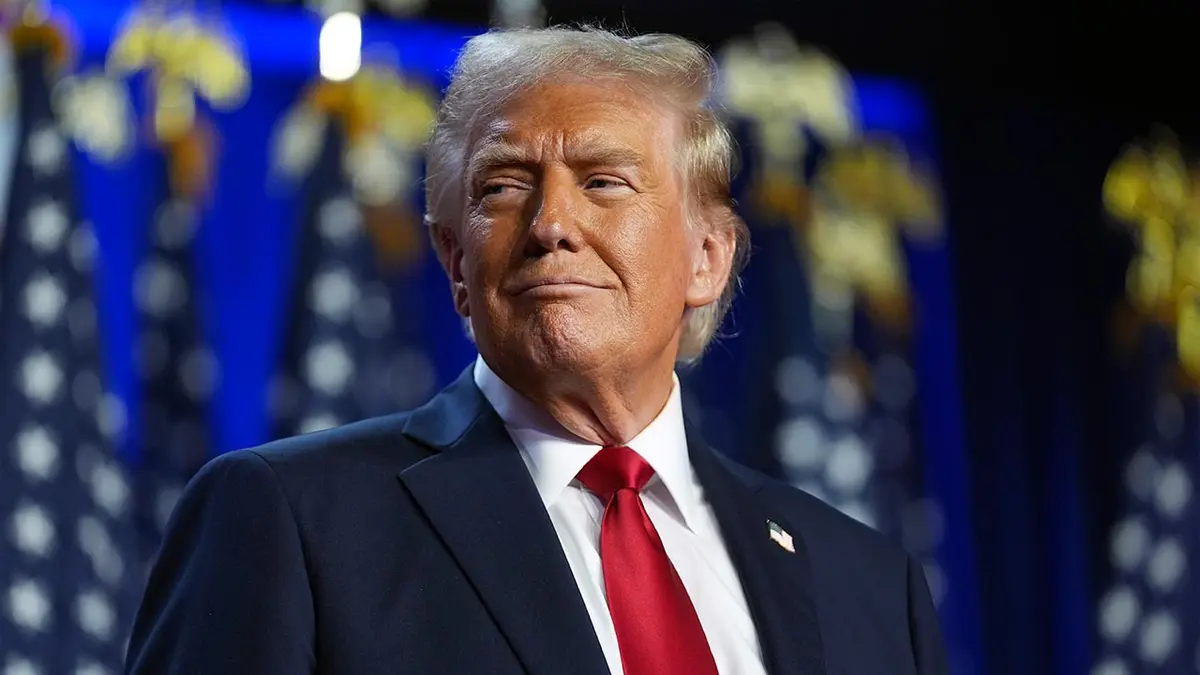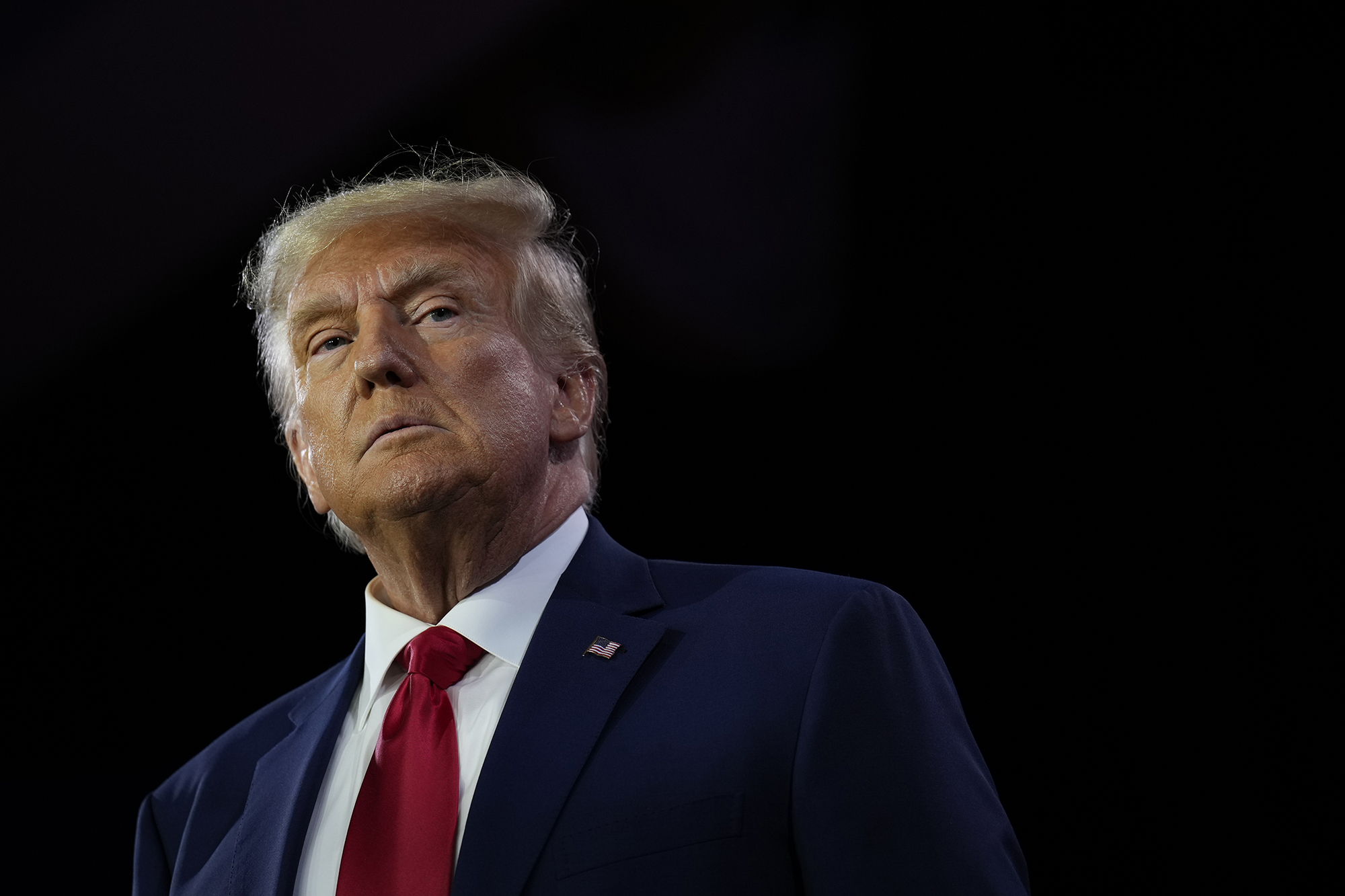Was Trump Ever A Democrat? Unpacking His Political Journey
Have you ever wondered about the political journey of someone like Donald Trump? It's a question many folks ask, especially when thinking about how politicians change over time. You know, sometimes it seems like people just stick to one party their whole lives, but that's not always the case. It's actually pretty common for individuals, even very prominent ones, to shift their political homes as their views evolve or as the political landscape around them changes. So, the idea of a public figure having different party affiliations throughout their career is, well, not unheard of, is that right?
Thinking about someone who has been at the center of so much public discussion, like Donald Trump, his political background often comes up. People are naturally curious about where he started and how he ended up where he is today. It's a bit like looking at an old map and seeing how the roads have changed over the years, more or less.
Today, we're going to take a closer look at his path. We'll explore his different party registrations and what might have influenced those choices. It's a pretty interesting story, and we'll try to get to the bottom of it, you know, without getting too bogged down in the details, but still covering what matters.
Table of Contents
- Donald Trump: A Quick Look at His Life
- The Shifting Sands of Party Loyalty
- Why the Party Changes?
- Trump's Presidency: Actions and Allegiances
- What Does This Mean for Voters?
- People Often Ask About Trump's Party History
Donald Trump: A Quick Look at His Life
Before we get into his party affiliations, it's helpful to know a little bit about Donald Trump himself. He's a pretty well-known figure, obviously, but a quick overview of his background helps put things into perspective. He comes from a family involved in real estate, and he made his name in business and media before stepping into politics, basically.
He was born and grew up in New York City, which is a place known for its dynamic atmosphere and, well, a lot of different viewpoints. His career before politics was largely in real estate development, building towers, hotels, and casinos. He also became a television personality, which, you know, really put him in the public eye even more.
Here's a quick table with some personal details, just for reference. It helps to ground the discussion in some basic facts, sort of, before we get to the political stuff.
| Full Name | Donald John Trump |
| Date of Birth | June 14, 1946 |
| Place of Birth | Queens, New York City, New York |
| Education | Wharton School of the University of Pennsylvania |
| Prior Profession | Businessman, Television Personality |
| Political Office Held | 45th President of the United States |
The Shifting Sands of Party Loyalty
Now, let's get to the main question: Was Donald Trump ever a Democrat? The short answer, you know, is yes, he was. His political party registration has changed a few times over the years. This isn't super unusual for someone who spends a lot of time in public life, but his shifts are, arguably, quite notable given his later political trajectory.
It's important to remember that party affiliation can be a pretty fluid thing for some people. Sometimes it's about personal beliefs, and other times it's about what seems like the best fit for their goals at a particular moment. For Trump, his journey through different parties tells a bit of a story about his own evolution, and maybe, just maybe, the broader changes in American politics, too.
Early Political Leanings and Registrations
Donald Trump first registered as a Republican back in 1987. However, that wasn't his only stop on the political spectrum. Before that, and even after, he showed a willingness to align with different groups. For instance, he was registered as a Democrat from 2001 to 2009, which, you know, is a pretty significant chunk of time.
During those years, the Democratic Party was, in some ways, quite different from how it's often perceived today. It had a broader tent, and some of its economic policies might have appealed to a real estate developer like Trump at the time. He even contributed to political campaigns across the aisle, which is something many business people do, you know, to maintain relationships and influence, basically.
His early political donations and public statements, in a way, often reflected a more centrist or even somewhat liberal viewpoint on certain social issues, which might surprise some people today. It shows that his positions, like anyone's, can shift and change over time, and that's just a part of life, isn't it?
A Brief Stint as a Reform Party Member
Before his Democratic registration, and after his initial Republican registration, Trump also had a period where he was part of the Reform Party. This was around the late 1990s, and it was a time when third parties were getting a bit more attention, you know, with figures like Ross Perot making a splash.
He even explored a presidential run under the Reform Party banner in 2000. This move, arguably, showed an independent streak and a willingness to operate outside the two major parties. It suggests he was looking for a platform that might better suit his, well, his unique style and policy ideas at that moment, perhaps.
Being a part of the Reform Party, even for a short while, really highlights that his political identity wasn't always fixed. It was, you know, more of a journey with different stops along the way, which is pretty common for people who are trying to figure out where they fit best in the political world.
The Road to Republicanism
After his time as a Democrat, Donald Trump returned to the Republican Party. He changed his registration back to Republican in 2009, and this is where he has remained, you know, ever since. This shift marked a significant point, especially considering his eventual presidential run.
The Republican Party was, at that time, starting to see some changes in its own makeup and priorities. The Tea Party movement was gaining steam, and there was a growing desire among some voters for candidates who were, arguably, less traditional and more outspoken. This environment, in a way, seemed to align more closely with Trump's own public persona and his views on certain issues, like trade and immigration.
His re-registration as a Republican set the stage for his political future, really. It was a pretty clear signal of where he saw his political home, and it ultimately led to his successful presidential campaign years later, obviously.
Why the Party Changes?
So, why would someone like Donald Trump change his party affiliation multiple times? It's a pretty good question, and there are several reasons why public figures, or anyone, might do this. It's rarely just one thing, you know, but often a mix of factors that come into play.
Sometimes, it's about evolving personal beliefs. Other times, it's about political strategy or finding the best vehicle for one's ambitions. For someone who has been in the public eye for so long, these shifts can offer a glimpse into their changing perspectives, and perhaps, the changing times themselves, too.
Pragmatism or Principle?
One way to look at Trump's party changes is through the lens of pragmatism. For a businessman, aligning with the party that seems most likely to achieve certain goals, or perhaps offer the most beneficial environment for business, could be a driving force. It's a very practical approach, you know, to getting things done.
However, it could also be about principle. As people grow and experience more, their core beliefs might shift, leading them to feel more aligned with a different political philosophy. It's hard to say for sure what the primary motivator was at each point for Trump, but it's likely a combination of both, in some respects.
His shifts might also reflect a desire to find a party that truly represented his evolving views on the economy, foreign policy, or social matters. Sometimes, a party's platform changes, and people find themselves no longer fitting in as well as they once did, and that's just how it goes, sometimes.
Public Perception and Political Goals
Another aspect to consider is how party affiliation impacts public perception and political goals. For someone with political aspirations, choosing the right party can be crucial for gaining support and, well, actually winning elections. It's about finding where your message will resonate most effectively, more or less.
For Trump, his later alignment with the Republican Party certainly helped him tap into a base of voters who were looking for a different kind of leader. His populist message and outsider status found a strong home within the Republican primary electorate, and then the broader party, too. It was, arguably, a very strategic move that paid off for him, basically.
The party he chose also shaped how the public viewed him and what they expected from him. It's like putting on a certain uniform; it tells people a lot about your role and what you stand for, you know, without you even having to say much.
Trump's Presidency: Actions and Allegiances
When Donald Trump became president, he did so as a Republican. His actions and policies during his time in office clearly reflected the Republican platform and, you know, his own unique approach to governance. This period really solidified his image as a Republican leader, which is pretty far from his past Democratic affiliation.
For instance, we saw him take action like when he cleaned house, terminating 17 inspectors general as his first week in office came to a close. This kind of decisive action, you know, often resonates with a certain segment of the Republican base looking for a strong hand. Also, his administration held events, like when President Donald Trump on Thursday held an event at the White House commemorating Black History Month, which was attended by golfer Tiger Woods, sen. These kinds of public engagements are part of the presidential role, regardless of party, but they are carried out under the banner of the sitting president's party.
His presidency also saw him engage in political battles that often highlighted a clear divide between the parties. For example, Trump's video highlights Democrats' hypocrisy, ending with Obama in handcuffs, which is, you know, a pretty strong statement that clearly positions him against the Democratic Party. He also showed support for allies, like when Trump supports Bondi amid escalating feud with Bongino over Epstein files and DOJ handling. These actions, arguably, show a clear Republican allegiance and a willingness to challenge those perceived as political opponents.
We've also seen moments where President Donald Trump took to Truth Social to express sympathy on behalf of himself and First Lady Melania Trump, saying they were saddened to hear of Biden’s diagnosis. This, you know, shows a certain level of decorum and shared humanity that can exist even between political rivals. However, the broader context of his presidency, with actions like Trump's rescissions package passing the House with a narrow vote and heading for the president's signature, consistently demonstrated his alignment with Republican legislative goals and priorities.
It's fair to say that during his presidency, his actions, his rhetoric, and his policy pursuits were very much in line with the modern Republican Party. This really put the question of his past party affiliations into perspective, showing how much his political identity had, well, evolved and settled into its current form, basically.
What Does This Mean for Voters?
For voters, understanding a politician's full political journey, including any party changes, can be pretty important. It helps paint a more complete picture of their beliefs and how they might govern. It's not just about where they are now, but also, you know, where they've been.
When someone changes parties, it can mean a few things. Sometimes it signals a genuine shift in their personal philosophy. Other times, it might suggest a more pragmatic approach to politics, where they seek the most effective path to power or influence. For voters, it means looking beyond just the current party label and considering the whole story, so to speak.
It encourages a deeper look at a candidate's specific policy positions, their voting record (if they have one), and their public statements over time. This kind of examination helps people make more informed choices, you know, when they head to the polls. Learn more about our main page on our site, and link to this page for more insights into political history.
People Often Ask About Trump's Party History
Many people have questions about Donald Trump's political past. It's a topic that comes up quite a bit, especially when discussions turn to his political identity and how he became such a prominent figure. Here are a few common questions that folks often wonder about, basically.
When did Donald Trump first register as a Republican?
Donald Trump first registered as a Republican back in 1987. This was, you know, his initial foray into formal party affiliation, setting the stage for his later political involvement. It's a pretty interesting starting point for his long political story, isn't it?
How long was Donald Trump a registered Democrat?
Donald Trump was a registered Democrat for a significant period, from 2001 to 2009. That's, you know, nearly a decade where he formally identified with the Democratic Party. It's a detail that often surprises people given his later political trajectory, obviously.
Why did Donald Trump switch from Democrat to Republican?
The reasons for Donald Trump's switch from Democrat back to Republican are, you know, likely a mix of factors. It could have been due to evolving personal beliefs, a changing political landscape, or a strategic decision to align with the party that best suited his political ambitions at the time. It's hard to pinpoint one single reason, but it was, arguably, a pivotal moment in his political career.

CBS 60 minutes | Paramount paid $16 million in settlement: Trump claims

Fox News Voter Analysis: How Trump regained the White House | Fox News

Trump said he's a target of the special counsel’s probe into 2020